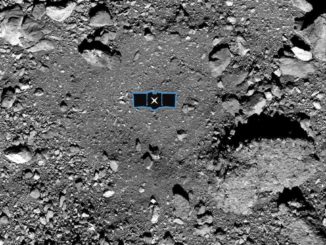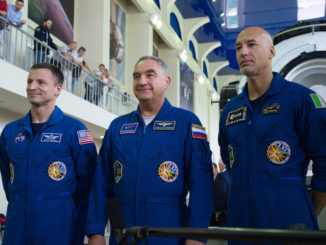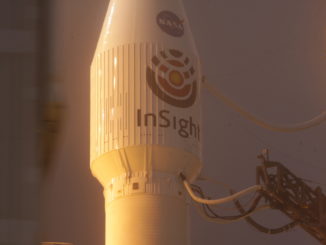STORY WRITTEN FOR CBS NEWS & USED WITH PERMISSION
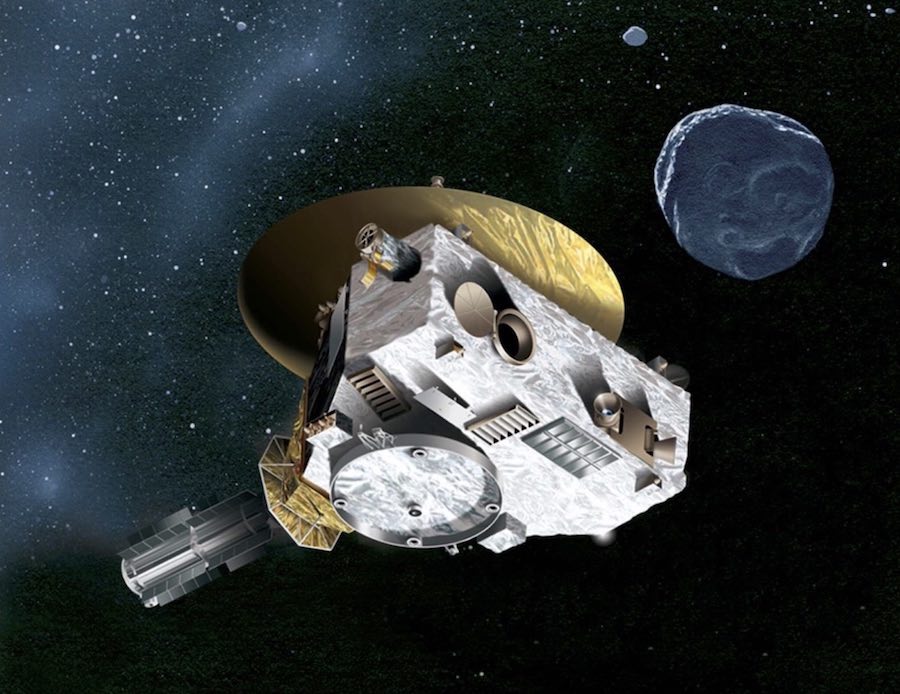
Three years and a billion miles past Pluto, NASA’s New Horizons probe is on the verge of at least one more pioneering, once-in-a-lifetime milestone: a New Year’s Day flyby of a small body known as 2014 MU69, unofficially dubbed Ultima Thule — “beyond the known world” — in a NASA naming contest.
Like Pluto, Ultima Thule (pronounced TOO-lee) is a denizen of the remote Kuiper Belt, a vast realm beyond the orbit of Neptune populated by uncounted dwarf planets and a reservoir of frozen remnants left over from the birth of the solar system 4.6 billion years ago.
Little more than a dim point of light to even the Hubble Space Telescope, Ultima Thule will be the most distant object ever directly explored, a record that likely will stand for decades to come if not longer.
If all goes well, New Horizons will race by its target at a velocity of 32,000 mph — nearly nine miles per second — at 12:33 a.m. on New Year’s Day, passing within about 2,200 miles of Ultima Thule’s as-yet-unseen surface.
Four hours later, the spacecraft will turn to aim its dish antenna at Earth to confirm a successful encounter. A few hours after that, the first high-priority images and other data will begin making their way back to the inner solar system.
“Across the whole team, people are ready, they’re in the game, we can’t wait to go exploring,” Alan Stern, the New Horizons principal investigator, said Friday. “It’s been three-and-a-half years (since the Pluto flyby), we’ve worked so hard, people are ready to see that payoff and see what we can learn about the birth of our solar system.”
At Ultima Thule’s distance of 4.1 billion miles from Earth, it will take radio signals, traveling 186,000 miles per second, six hours seven minutes and 58 seconds to cross the gulf to waiting scientists at Johns Hopkins University’s Applied Physics Laboratory near Baltimore. The first high-resolution image is expected to be unveiled during a Jan. 2 news briefing.
Despite the ongoing government shutdown, the public is expected to be able to follow along on NASA’s satellite television channel. But just in case, the Applied Physics Laboratory, which built and operates New Horizons for NASA, plans to post images and other data on the New Horizons web page and the lab’s YouTube channel.
Only a handful of images and other high-priority data are expected before New Horizons moves behind the sun as viewed from Earth on Jan. 4, temporarily interrupting communications. But even when the downlink resumes, it will take about 20 months to bring in the entire treasure trove to Earth.
That’s because of the enormous distances involved, the faint signal from New Horizons’ 30-watt transmitter and other demands on NASA’s globe-spanning Deep Space Network antennas used to communicate with spacecraft across the solar system.
For scientists eager to study an untouched remnant of the original cloud of rocky debris that coalesced to form the solar system, the long wait will be worth it.
“Everything that we have visited before has been warmed up at some point,” Stern said in an interview earlier this month. “Asteroids orbit close to the sun, the comets … were born cold, but we only have visited comets when they’re down near the Earth’s orbit, when they’re warm. The heat, the warmth causes chemical reactions to take place, it can drive surface processes, etc., that create an evolution.”
Ultima Thule, he said, “is completely unmarked by any of those things.” It is classified as a “cold classical,” that is, a Kuiper Belt body with a nearly circular orbit that is only slightly tilted to the plane of the solar system’s planets. Another major population of Kuiper Belt bodies, made up of material that originated closer to the Sun, was pushed outward by gravitational interactions in the distant past.
But not the cold classicals and Ultima Thule.
“It was born four billion miles from the sun, it has always been there, it’s temperature is just barely above absolute zero,” Stern said. “I don’t believe there’s any object we’ve ever visited that’s been kept that cold its entire existence. So this is really a time capsule, that’s the scientific value.”
New Horizons will fly more than two times closer to Ultima Thule than it did during the Pluto flyby, Stern said, “so the images are going to be much more detailed.”
“We’re going to find out how this thing is built, how much it’s evolved, what it’s made of, if it has an atmosphere, if it has moons, if it has rings, we’re going to take its temperature, we’re going to measure its radar reflectivity, we’re going to find out if it’s surrounded by a dust cloud left over from formation,” he said.
“All that stuff and more, because we’re not just going to take imagery,” he added. “We map its surface, we map it in color and in addition to that, we map it in stereo so we have topography everywhere. We’ll not just determine its composition, but we map it from place to place to see if it’s the same everywhere or if it’s made up of smaller building blocks.”
The encounter has five major objectives: to characterize the geology, morphology and topology of Ultima Thule; to map its surface color and composition; to determine its structure; to search for satellites and rings; and to look for any sort of a coma, or atmosphere.
“Ultima Thule could be heavily cratered, highly pitted or it could even be smooth from ancient flows and ancient activity,” said Carey Lisse, a New Horizons science team collaborator. “We don’t know. We simply aren’t going to know until we get there in January. I’m waiting to be surprised.”
Launched nearly 13 years ago in January 2006, New Horizons flew past Jupiter in February 2007, using the giant planet as a target to test its instruments and, more important, using its gravity to fling the craft onto a fast-track trajectory to Pluto.
Even so, moving 100 times faster than a jetliner throughout its voyage, it still took another eight long years to reach its target in July 2015, flying past at a distance of 7,800 miles to collect the first close-up pictures and a wealth of data about the solar system’s most famous dwarf planet.
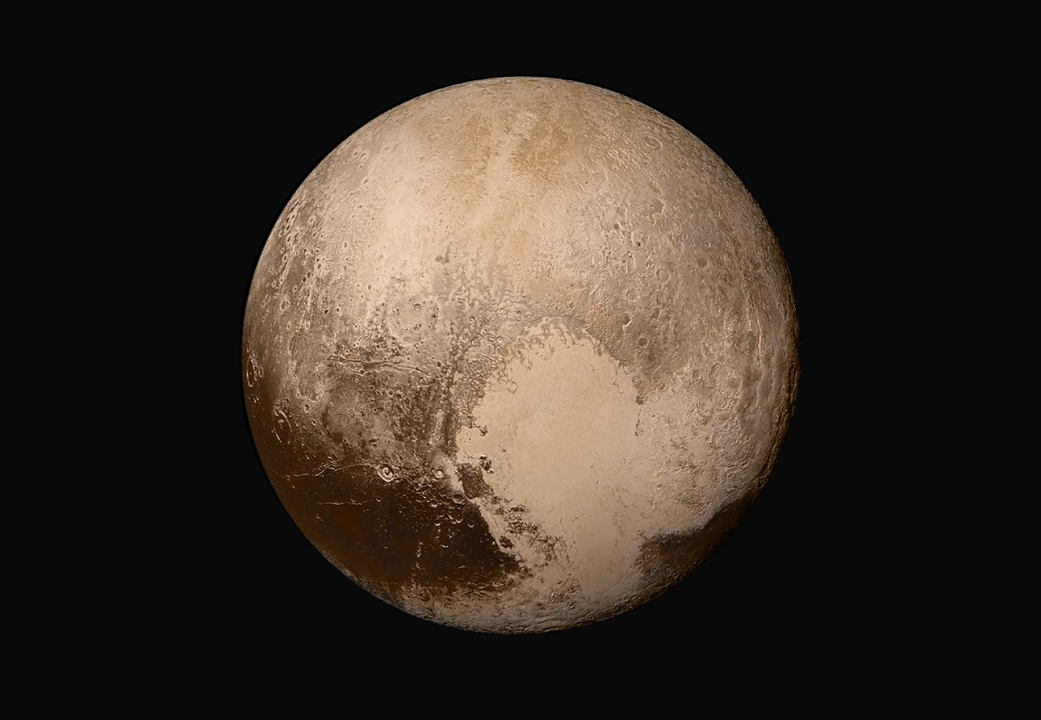
While the Pluto encounter was the spacecraft’s primary goal, mission managers knew it would have left over propellant and that its nuclear power supply would keep the probe functioning through the 2020s. Well before the Pluto flyby, the team requested observing time on the Hubble Space Telescope to look for possible targets of opportunity past Pluto that might be close enough to New Horizons’ trajectory to enable another flyby.
Hubble discovered Ultima Thule in images captured on June 26, 2014. It was catalogued as 2014 MU69 and given the minor planet number 485968. An analysis of its orbit showed New Horizons could reach it with a post-Pluto trajectory correction maneuver.
After the Pluto encounter was complete, NASA managers approved a mission extension. A carefully planned rocket firing was carried out, adjusting New Horizons’ course to set up the upcoming encounter with Ultima Thule.
New Horizons did not spot its quarry until Aug. 15 this year, at a distance of more than 100 million miles. It was a barely visible pinpoint of light, and will remain little more than a brighter point of light until Monday, the day before the flyby.
Even so, scientists have at least some idea what to expect when New Horizons gets there. Based on occultation observations in which Ultima Thule passed in front of a background star as viewed from Earth, researchers believe the target is an elongated body measuring about 17 miles across. It may be made up of two bodies in close orbit or two lobes that are physically connected, a so-called “contact binary.”
Researchers know Ultima Thule receives only about 0.05 percent of the sunlight Earth does and they know it is reddish in color. But they don’t yet know its exact dimensions, whether it has any rings, moons or any trace of an atmosphere.
“Really, we have no idea what to expect,” Stern told planetary scientists during a conference in October. “We only discovered it in 2014 with the Hubble Space Telescope working at the very limit of its fantastic capabilities. We’ve been able to learn enough about its orbit to be able to intercept it and target it. But there’s very little else we know.”
Whatever they find out, it will happen very, very quickly. Ultima Thule’s small size means New Horizons’ cameras will not begin to resolve it until the day before the encounter.
On Sunday, for example, the best photos will have a resolution of about 6.2 miles per picture element, or pixel, and Ultima Thule will measure two to three pixels across. On New Year’s Eve, the resolution will improve to 3.4 miles per pixel and the body will measure five to six pixels across.
But by the evening of New Year’s Day, the resolution will have improved to 1,000 feet per pixel and the day after that, 500 feet per pixel with Ultima Thule stretching across 215 pixels.
“Although we’re traveling at about the same speed as we pass Ultima that we passed Pluto, Pluto’s about the size of a continent like North America,” Stern said. “And so, when we were 10 weeks out from Pluto we could already resolve its disk about as well as the Hubble Space Telescope, and each week we could see more and more detail.
“But Ultima 10 weeks out is just a dot in the distance. And it will remain as a dot in the distance until literally the day before the flyby when we start to resolve it. By the day after the flyby, we’ll have high resolution images, we hope even higher resolution than the best images of Pluto. So it’s going to be quick.”
New Horizons is equipped with six primary instruments: an imaging spectrometer known as Alice, a multi-spectral visible light camera called Ralph, a long-range reconnaissance imager — LORRI — incorporating an 8-inch telescope, a solar wind particle detector, an energetic particle spectrometer and a student-built dust counter.
In addition, its radio system includes circuity enabling precise analysis of changes caused when signals from Earth pass through an atmosphere.
Data is stored on redundant eight-gigabyte solid-state recorders and sent back to Earth with an X-band transmitter using an 83-inch-wide fixed dish antenna. Data transmission rates will be slightly better than 1,000 bits per second.
Stern said the encounter poses a much tougher challenge for New Horizons than Pluto did.
“This one is harder for a number of different reasons. First of all, it’s smaller and it’s fainter and so it’s harder to track, it’s harder to home in on,” he said. “It’s 100 times smaller, it’s 10,000 times fainter. Secondly, every year, the on board nuclear power supply produces less power. So now we have to much more carefully manage which instruments and avionics are on, we have to manage our power much more carefully.”
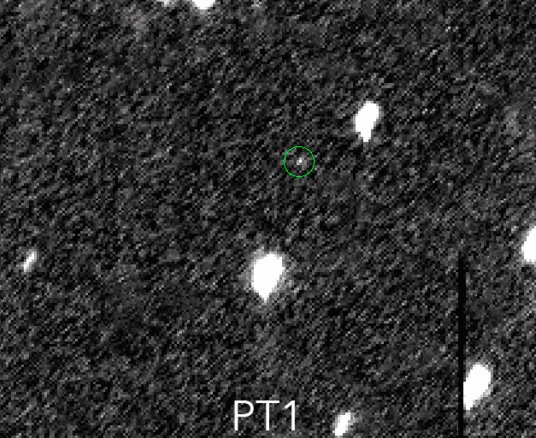
Thirteen years after launch, the spacecraft’s single radioisotope thermoelectric generator, or RTG, is producing only about 190 watts of power, roughly enough to energize three standard light bulbs.
In addition, because the science team does not know what to expect, New Horizons is going to carefully search the area around Ultima Thule, on the lookout for moons or other features, so “there are going to be a lot of images of blank sky simply because we’re trying to blanket the whole area in the event we discover a moon late.”
Four days after the flyby, communications with New Horizons will be suspended as the spacecraft moves behind the Sun as viewed from Earth. The science team has prioritized data playback to ensure a high-resolution image of Ultima Thule reaches Earth before the blackout begins.
“This is a much faster reveal than anything we’ve done on New Horizons before,” Stern said. “Essentially, it’s an overnight conversion from a dot in the distance to a real world. And I think that first week in January, when we’re getting the first detailed images back, is going to be breathtaking! Not just scientifically. I think for the people who follow the news just to see and think of what our race can do, what our species can do, is going to be amazing.”
Asked whether New Horizons can reach a third Kuiper Belt target down the road, Stern said he wants his team to stay focused on Ultima Thule in the near term. But after the encounter is complete, “we will look for another flyby target. I can’t promise anyone, you or NASA, that we will find one (but) I can tell you this: there’s nothing my team wants more than to get a second one.”
Editor’s note: Portions of this story were originally written for Astronomy Now magazine and are used here with permission.

